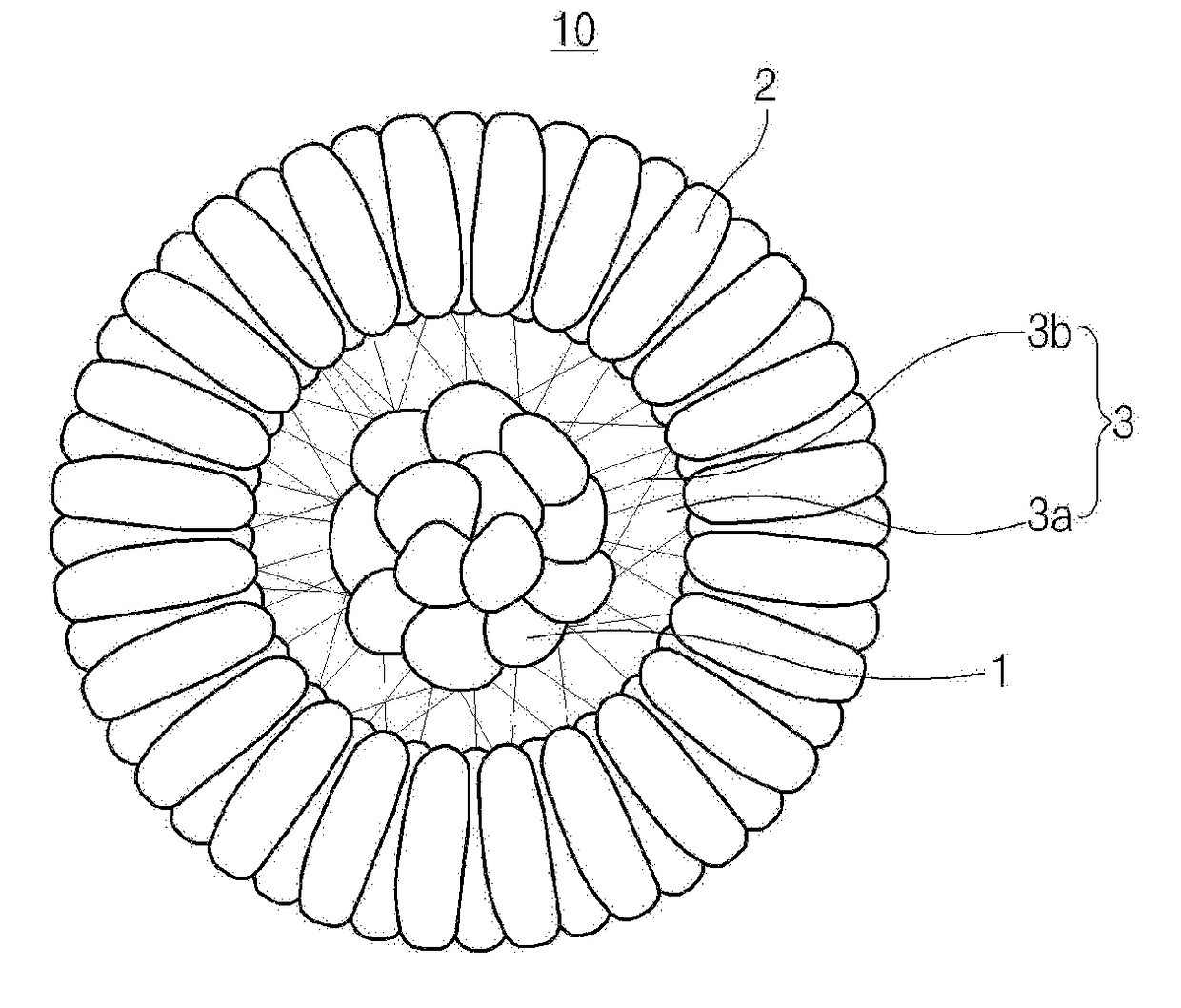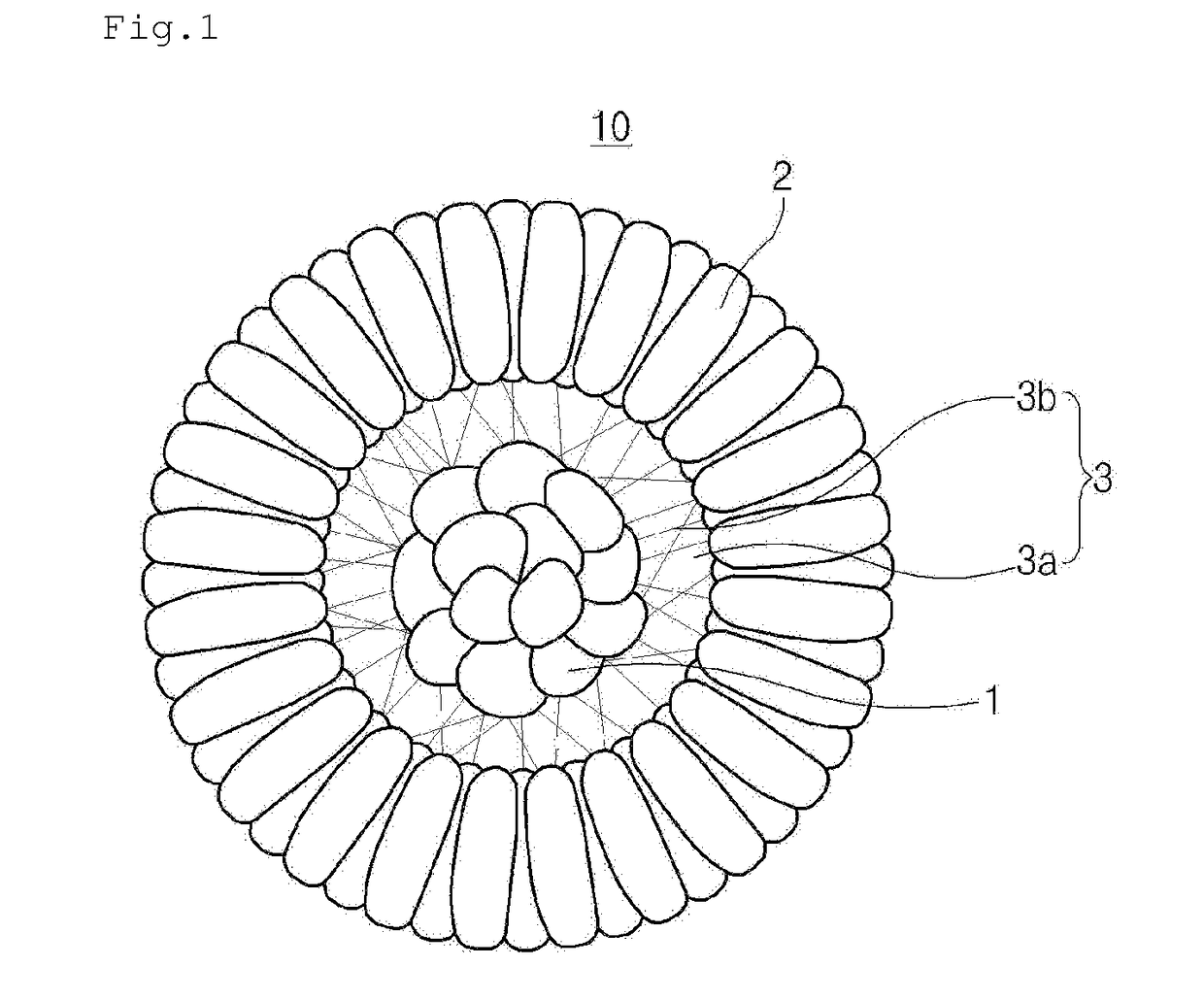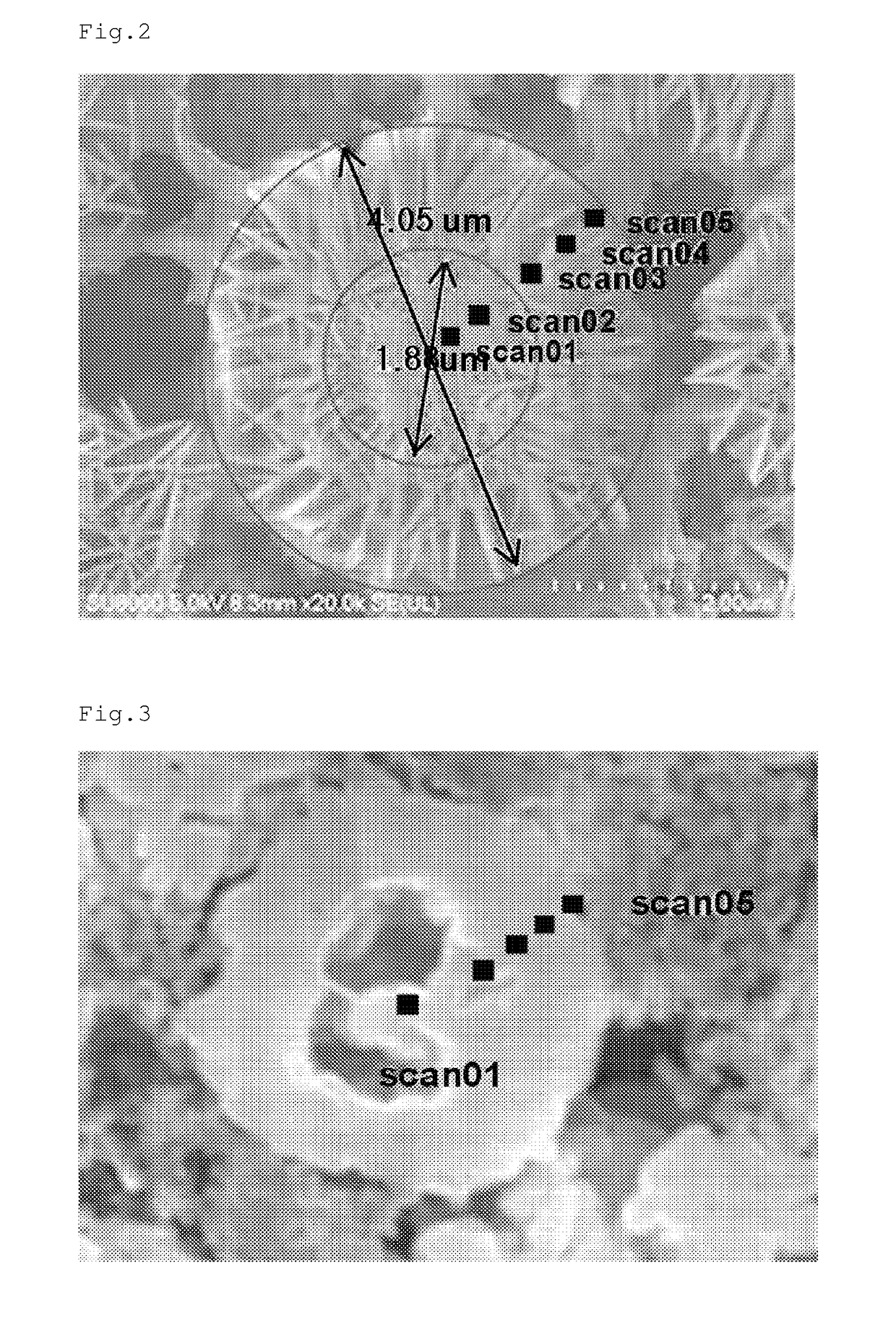Positive electrode active material for secondary battery, method of preparing the same, and secondary battery including the positive electrode active material
a secondary battery and active material technology, applied in the direction of batteries, nickel compounds, cell components, etc., can solve the problems of low rate capability and initial capacity, narrow active area in contact with electrolyte solution, etc., to achieve high capacity, maximize the effect of reactivity with electrolyte solution, and improve output characteristics and life characteristics of secondary batteries
- Summary
- Abstract
- Description
- Claims
- Application Information
AI Technical Summary
Benefits of technology
Problems solved by technology
Method used
Image
Examples
example 1
on of Precursor and Positive Electrode Active Material
[0174]In a 5 L batch-type reactor set at 60° C., nickel sulfate, cobalt sulfate, and manganese sulfate were mixed in water in an amount such that a molar ratio of nickel:cobalt:manganese was 40:30:30 to prepare a first transition metal-containing solution with a concentration of 2M, and nickel sulfate, cobalt sulfate, and manganese sulfate were mixed in water in an amount such that a molar ratio of nickel:cobalt:manganese was 80:10:10 to prepare a second transition metal-containing solution with a concentration of 2M. A container containing the first transition metal-containing solution was connected to the reactor, and a container containing the second transition metal-containing solution was connected to the container containing the first transition metal-containing solution. In addition, a 4M NaOH solution and a 7% NH4OH aqueous solution were prepared and connected to the reactor, respectively.
[0175]3 L of deionized water was ...
example 2
on of Positive Electrode Active Material Precursor
[0178]In a 5 L batch-type reactor set at 60° C., nickel sulfate, cobalt sulfate, manganese sulfate, and magnesium sulfate were mixed in water in an amount such that a molar ratio of nickel:cobalt:manganese:magnesium was 40:30:30:0.02 to prepare a first transition metal-containing solution with a concentration of 2M, and nickel sulfate, cobalt sulfate, manganese sulfate, and magnesium sulfate were mixed in water in an amount such that a molar ratio of nickel:cobalt:manganese:magnesium was 80:10:10:0.02 to prepare a second transition metal-containing solution with a concentration of 2M. A container containing the first transition metal-containing solution was connected to the reactor, and a container containing the second transition metal-containing solution was connected to the container containing the first transition metal-containing solution. In addition, a 4M NaOH solution and a 7% NH4OH aqueous solution were prepared and connecte...
example 3
on of Positive Electrode Active Material
[0182]The precursor particles prepared in Example 1 were mixed with a lithium hydroxide, as a lithium raw material, and tungsten oxide (IV) at a molar ratio of 1:1.07:0.005 and then heat-treated at 300° C. for 10 hours, at 500° C. for 10 hours, and at 820° C. for 10 hours under an oxygen atmosphere (oxygen partial pressure of 20%) to prepare a positive electrode active material including a tungsten-doped lithium composite metal oxide in which nickel, cobalt, and manganese in the lithium composite metal oxide were distributed while respectively having a concentration gradient.
PUM
 Login to View More
Login to View More Abstract
Description
Claims
Application Information
 Login to View More
Login to View More - R&D
- Intellectual Property
- Life Sciences
- Materials
- Tech Scout
- Unparalleled Data Quality
- Higher Quality Content
- 60% Fewer Hallucinations
Browse by: Latest US Patents, China's latest patents, Technical Efficacy Thesaurus, Application Domain, Technology Topic, Popular Technical Reports.
© 2025 PatSnap. All rights reserved.Legal|Privacy policy|Modern Slavery Act Transparency Statement|Sitemap|About US| Contact US: help@patsnap.com



